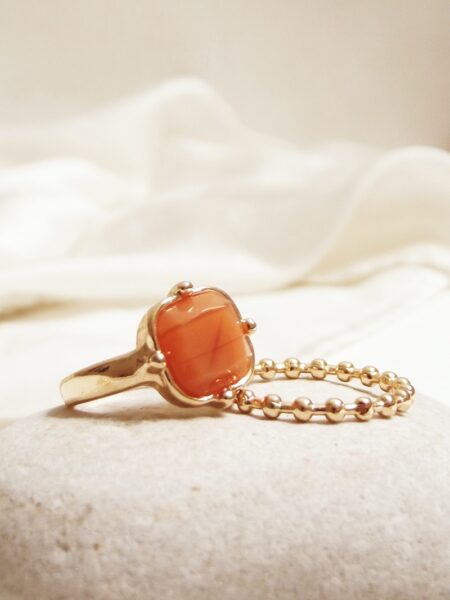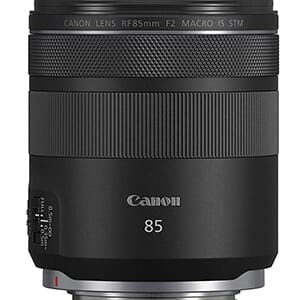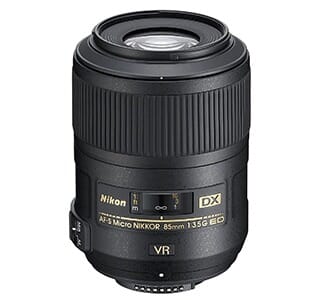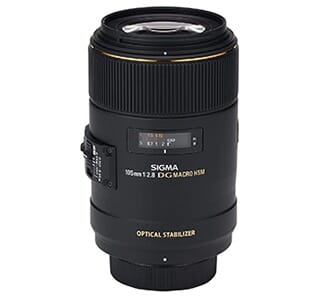Editor’s Key Takeaways: Top Nine Lenses for High-Quality Jewelry Photography

This blog post presents a guide to the best lenses for capturing high-quality jewelry photos, with emphasis on lenses that provide 1:1 magnification, small minimum focusing range, and a focal length of 50mm or more. Key details of individual items like rings and necklaces can be made standout with the appropriate lens.
- The ultimate lenses for jewelry photography:
- Sony FE 90mm f/2.8 Macro G OSS
- Sony FE 50mm f/2.8 Macro
- Canon EF 100mm f/2.8L Macro IS USM
- Canon RF 85mm f/2 Macro IS STM
- Canon RF 100mm f/2.8L Macro IS USM
- Nikon AF-S DX Micro NIKKOR 85mm f/3.5G ED VR
- Nikon NIKKOR Z MC 105mm f/2.8 VR S
- Nikon NIKKOR Z MC 50mm f/2.8
- Sigma 105mm f/2.8 EX DG OS HSM Macro
The Sony FE 90mm f/2.8 Macro G OSS is highlighted as the top lens for Sony mirrorless camera owners. It has a 1:1 magnification, a minimum focusing distance of 0.92 ft / 0.28 m, and great features like Optical Steady Shot Image Stabilization and a large maximum aperture. For wide-angle shots, the Sony FE 50mm f/2.8 Macro is recommended for Sony E-mount cameras.
When you buy through links on our site, we may earn a commission at no cost to you. We evaluate products independently. Commissions do not affect our evaluations. As an Amazon Associate, we earn from qualifying purchases.
Introduction
To take high-quality jewelry photos, you need a versatile lens that has macro capabilities. Ideally, the lens should have a 1:1 magnification ratio, a small minimum focusing distance, and a focal length of 50mm or more.
You can then focus on those small, beautiful details of specific pieces like rings and necklaces. If you want to take your jewelry photography to the next level, we have hand-picked nine of the best lenses currently available – enjoy!

The Best Lenses for Shooting Jewelry:
1. Sony FE 90mm f/2.8 Macro G OSS
The Sony 90mm Macro lens has brilliant optics and gives sharp images consistently together with advanced macro features.
In our opinion, the Sony FE 90mm f/2.8 Macro G OSS is the best lens for shooting jewelry for Sony mirrorless camera owners. The 90mm telephoto focal length can be used in numerous ways for your jewelry shots including closeups or close-crop portraits. It features a 1:1 magnification ratio and a minimum focusing distance of 0.92 ft / 0.28 m.

As a result, you can get the fine detail you want from small jewelry pieces, no matter how you frame the items, so you can capture different angles.
The lens is also super easy to use as it has some great features. The Optical Steady Shot Image Stabilization lets you use it handheld if you don’t have a tripod. The f/2.8 large maximum aperture means you can get brilliant background separation, work in low-light conditions, and create bokeh effects. You can also rely on consistent sharpness and minimum distortion due to the lens optics, which includes ED glass and advanced spherical elements.
2. Sony FE 50mm f/2.8 Macro
The Sony FE 50mm Macro lens is highly portable but has great features for jewelry photography including a 1:1 magnification ratio and large f/2.8 maximum aperture.
If you need a wider angle perspective for your jewelry photos, the Sony FE 50mm f/2.8 Macro is a brilliant option for Sony E-mount cameras. The 50mm length provides a more natural focal view similar to what the human eye can see.
It has all the essential features for closeup photography, including a magnification ratio of 1:1 and a small minimum focusing distance of just 6.3 inches / 0.52 ft. As a result, you can get close to your jewelry pieces and highlight important details like the gemstones, chain-links, and connections.

Aside from that, the f/2.8 maximum aperture gives you great flexibility for lighting conditions and means you can create professional bokeh effects in your jewelry backgrounds. This lens is also relatively lightweight and compact too so you could easily take it to different photoshoot locations without too much issue.
3. Canon EF 100mm f/2.8L Macro IS USM
The EF 100mm Macro lens offers some of the best image quality available and is easy to use due to the image stabilization and USM autofocus motor.
The Canon EF 100mm f/2.8L Macro IS USM is a great lens for jewelry photography and remains a popular choice for Canon camera users. It is meant for high-end photography and professional use and has a price tag that reflects this. Therefore, it may not be the best beginner option.

With a 100mm telephoto focal length, you’ll get excellent versatility for your jewelry photos. The lens also has a 1:1 magnification ratio, which is essential for closeup details and showing the intricacies of small pieces like rings and earrings. This is further enhanced by the ability to shoot at a close focusing distance of only 0.99 ft / 11.88 inches.
You’re pretty much guaranteed consistent image quality too due to the enhanced optics and L-series lens elements. The Canon EF 100mm is incredibly sharp and delivers virtually no distortion. Moreover, the f/2.8 maximum aperture means it works well in low-light situations but also allows for brilliant background separation. Lastly, it has image stabilization and a USM autofocus system, which make it easy to use.
4. Canon RF 85mm f/2 Macro IS STM
The RF 85mm Macro is an ideal lens for those starting out in jewelry photography due to its ease of use and features like the control ring and image stabilization.
The Canon RF 85mm f/2 Macro IS STM is a superb budget option if you are just starting out in jewelry photography and don’t want to commit to a professional model. Regardless, this lens still performs fantastically and allows you to easily create high-quality macro photos of jewelry and other small items.

The core macro features include a magnification ratio of 0.5x and a minimum focusing distance of 1.15 ft / 13.8 inches. Although a 1:1 ratio would be better, the minimum focusing distance still allows you to get detailed closeups of your jewelry pieces when combined with the 85mm focal length.
The Canon RF 85mm is easy to use too as it has OIS that works for up to five stops of shake correction. The STM autofocus also means that you should be able to focus quickly and to a high degree of accuracy when working at the maximum f/2 aperture. To make quick changes, you can also program the control ring for numerous settings like aperture and exposure compensation.
5. Canon RF 100mm f/2.8L Macro IS USM
The SA control ring allows you to alter the bokeh style of your jewelry shots and thus gives you fantastic creative freedom.
If you are taking jewelry shots in a professional capacity, the Canon RF 100mm f/2.8L Macro IS USM is the current best option for Canon EOS R cameras. This L-series lens delivers exceptional image quality and has ideal properties and features for macro and product shots of small objects like rings and necklaces.
The 1.4x magnification ratio is currently a world’s first and means that you get more-than-lifelike details. As a result, you should be able to focus on small aspects of jewelry pieces like stones, markings, or intricate metalwork.

This amazing lens also has a Spherical Aberration control ring. You can use this to adjust the foreground/background bokeh which can greatly alter the style and look of your images. For jewelry photography, this could be highly useful and allow you to produce entirely different styles of images. The Canon RF 100mm also features a standard control ring that can be set to change important settings like aperture, ISO, shutter speed, or exposure compensation.
6. Nikon AF-S DX Micro NIKKOR 85mm f/3.5G ED VR
The 85mm focal length is ideal for jewelry portraits and this is made easier by the vibration reduction and brilliant optical quality of this Nikon lens.
The Nikon AF-S DX Micro NIKKOR 85mm f/3.5G ED VR remains a top choice for jewelry photographers using Nikon APS-C cameras, but it can also be used on FX models too. It has an ideal 85mm focal length, which works for jewelry portraits, but with the 0.9 ft / 10.8-inch minimum focusing distance, you can also get fantastic closeup photos.

This lens has some great features to give you simple usability too. For example, it has VR II (vibration reduction) technology so that you can use it handheld without worrying about motion blur. Additionally, the SWM autofocus motor is relatively quick and accurate so you can easily focus on smaller details of the jewelry when working at large apertures.
The f/3.5 maximum aperture could be better, but it should still give you plenty of control and flexibility for various lighting conditions. You can also count on consistent image quality due to the optical features like ED elements and SIC coating (Super Integrated Coating).
7. Nikon NIKKOR Z MC 105mm f/2.8 VR S
The MC 105mm has fantastic optics and virtually eliminates things like chromatic aberration and color fringing to give you the best quality jewelry shots.
Nikon has some superb lenses and the best lens for shooting jewelry for Z cameras is currently the Nikon NIKKOR Z MC 105mm f/2.8 VR S. It gives you everything you need to create artistic and professional shots of small objects like jewelry.
Firstly, the 105mm telephoto focal length offers superior versatility in your compositions. For example, you could move in and use the small minimum focusing distance to get close crop shots with no background. Or work further out to balance background and subject.

Secondly, it has a 1:1 magnification ratio which is vital to showcase the all-important detail of jewelry like gemstones and engravings. The optics inside also provide superior image quality and consistency and you can expect minimum distortion. Compared to some other Nikon lenses, the MC 105mm has an improved lightweight design too.
8. Nikon NIKKOR Z MC 50mm f/2.8
The MC 50mm from Nikon is one of the smallest lenses on this list and is highly portable if you have multiple shooting locations.
If you want something cheaper that still offers fantastic macro capabilities, the Nikon NIKKOR Z MC 50mm f/2.8 is a great choice. It’s compact, lightweight, looks stylish, and is a good budget option for Nikon Z camera owners.

You can get great closeup shots of the jewelry items because of the 50mm focal length and small minimum focusing distance of just 0.16m / 6.3 inches. The lens also has a 1:1 magnification ratio to give you lifelike detail in your images.
The 50mm focal length is also similar to our vision and thus will allow you to create realistic jewelry photos on models from various angles and crops. You can still get superb background separation too and create bokeh effects due to the f/2.8 maximum aperture. The NIKKOR Z MC 50mm should also perform well in low-light situations if you are using black backgrounds for your jewelry shots.
9. Sigma 105mm f/2.8 EX DG OS HSM Macro
This Sigma macro lens has all the core components for jewelry photography including a 1:1 magnification ratio, large maximum aperture, and sharp optics.
The Sigma 105mm f/2.8 EX DG OS HSM Macro is the best third-party lens for shooting jewelry. It is available for Canon EF, Nikon AF-S FX, and Sony E cameras. You’ll get consistent image quality and some useful features for shooting closeups of jewelry and products or other macro photography like flowers.
The 105mm focal length gives you versatility in how you frame the piece, while the 1:1 magnification ratio ensures you get excellent detail. This is complemented by the minimum focusing distance of just 12.3 inches. Put all this together and you have the key ingredients to get detailed macro shots of small objects like earrings and pendants.

The f/2.8 maximum aperture allows you to create beautiful bokeh effects and also have greater control in low-light situations. If you don’t have a tripod, the Sigma 105mm has an OS (Optical Stabilizer) which corrects for up to four stops of camera shake, so you can easily use it handheld.
Features to Consider when Buying a New Jewelry Photography Lens
Macro Mode
Macro mode is important because you can focus close and get sharp images of small objects magnified. With a macro lens, you can focus from a close distance and magnify the subject, bringing into focus elaborate details like the cut of a stone, engravings, or the intricate design of the jewelry piece.
Minimum Focal Length of 50mm
A focal length of between 50mm to 105mm is perfect for jewelry photography. Anything wider than this and you simply can’t get the best crop or perspective to frame the pieces. Anything more than this and you have too much zoom and won’t be able to show any background in your photos.
Small Minimum Focusing Distance
Ideally, the lens should have a small minimum focusing distance. The smaller it is, the closer you can physically place the lens in relation to the piece of jewelry. This is beneficial when combined with a decent magnification ratio, as you can photograph minute details like gemstones and metalwork.
Improve Your Jewelry Photography Today with a Specialist Lens
You can get far better results using one of the best lenses for jewelry photography that we have outlined above, as opposed to a standard kit lens.
There are some fantastic budget options for beginners like the Sony FE 50mm f/2.8 Macro, Canon RF 85mm f/2 Macro IS STM, and Nikon NIKKOR Z MC 50mm f/2.8.

Alternatively, for professional work, the Canon EF 100mm f/2.8L Macro IS USM, Sony FE 90mm f/2.8 Macro G OSS, and Nikon NIKKOR Z MC 105mm f/2.8 VR S will give the best results consistently.
FAQs
What are the best lenses for jewelry photography?
We recommend a macro lens with a maximum magnification of 1:1 and a focal length of at least 50mm (35mm format equivalent).
Can I use a normal kit lens for photographing jewelry?
There are no hard and fast rules that say that you cannot use a kit lens for jewelry photography. The only problem is these lenses cannot focus from a close distance and don’t have the ability to magnify small details.
What is the best way to photograph jewelry?
Use a single source of light that you can easily control and balance for, and use a macro lens with a sharp camera.
What is the best light for shooting jewelry photography?
Artificial lights are the best because you can control them to your taste. Whatever you do, try not to use multiple light sources because they will have different color balances.
Disclosure/Disclaimer: As an Amazon Associate, we earn from qualifying purchases. Certain content was provided "as is" from Amazon and is subject to change or removal at any time. Product prices and availability: Amazon prices are updated daily or are accurate as of the date/time indicated and are subject to change. Any price and availability information displayed on Amazon.com at the time of purchase will apply to the purchase of this product.









